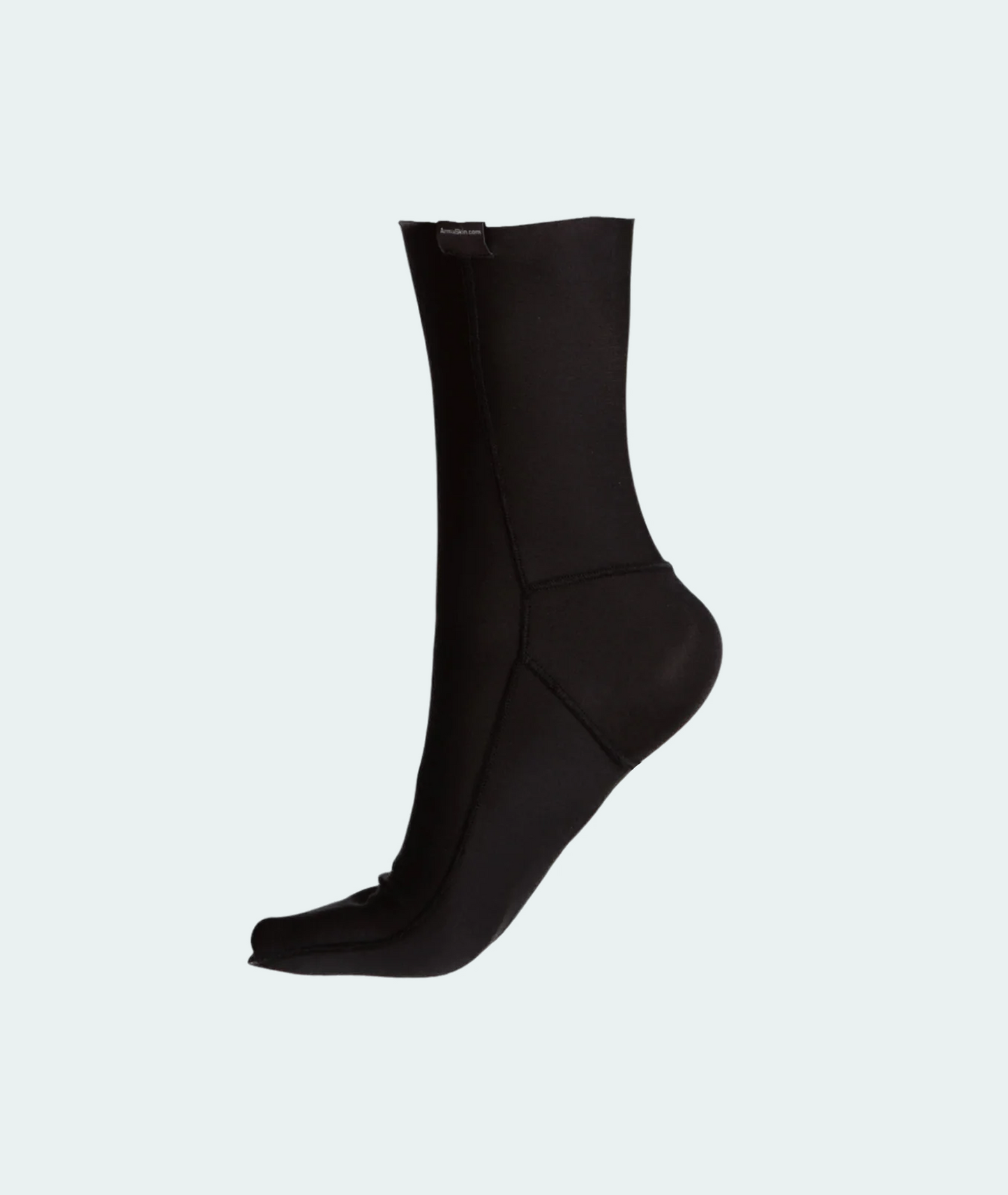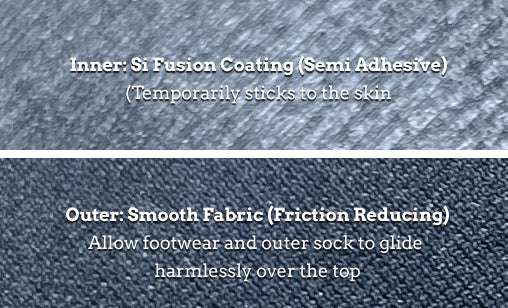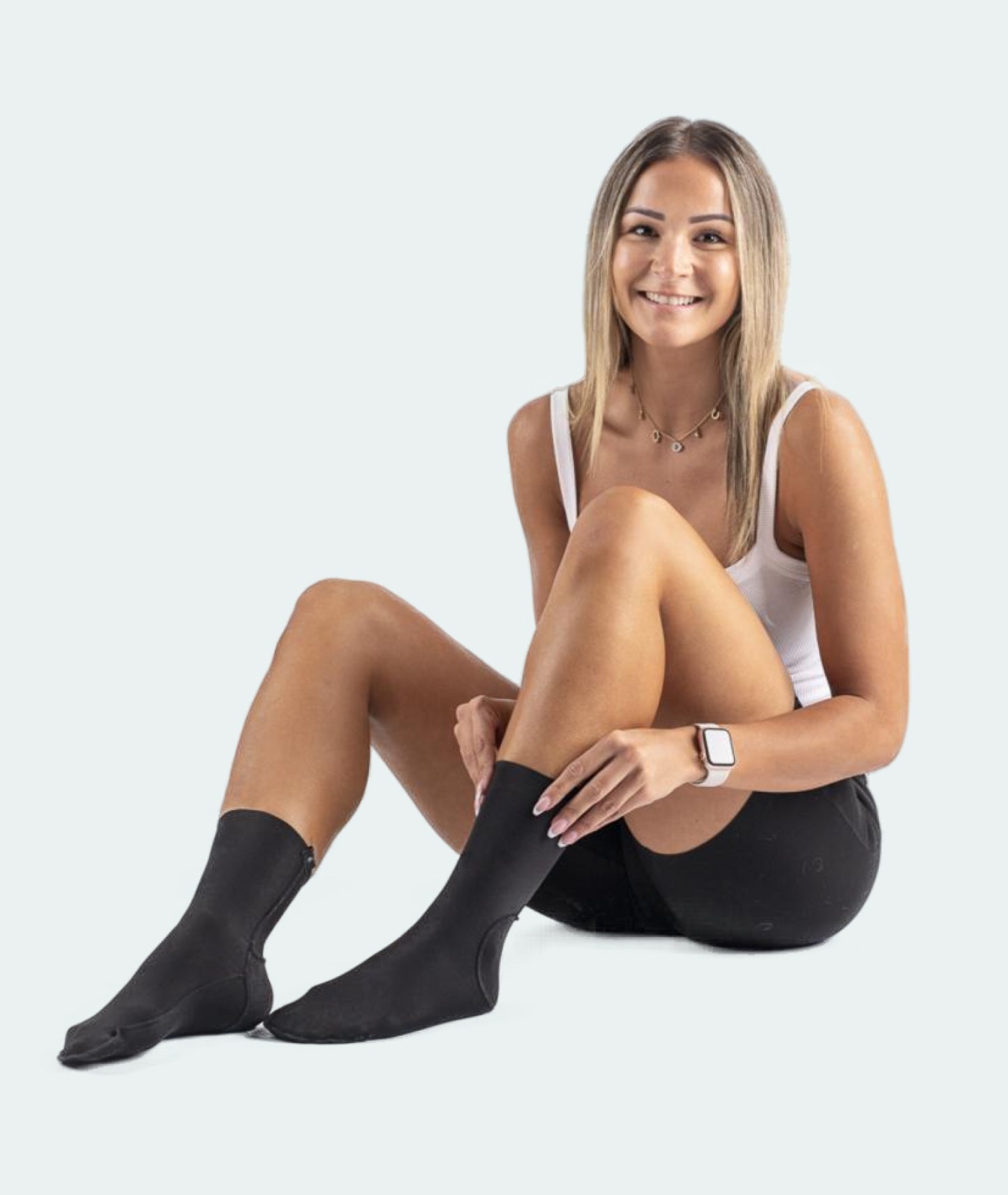By: ArmaSkin staff with valuable input from Hiking for Her
INTRODUCTION
In general, an ArmaSkin liner sock will provide substantial blister prevention in combination with any sock that you choose as your outer sock for hiking. The exceptions would be double layer socks and some compression socks. Cotton or cotton blend socks which tend to retain moisture rather than wick it away are also not preferred for optimum blister prevention.

Blisters can result from factors including movement of the skin (causing shear between skin layers), potentially exacerbated by other heat causing factors such as ambient temperature and insulation characteristics of the outer sock as well as moisture accumulation against the skin potentially exacerbated by hiking conditions such as becoming immersed in water when crossing waterways.
Contributing factors to blisters and general foot comfort can be when your foot has too little or too much room to move around inside your boots, your boots are too hard and not well broken-in, or you have an anatomical issue with your foot such as a bunion or hammer toe that rubs against the inside of your boot.
The sock fills gaps in the boot to prevent your feet from sliding around which not only prevents damaging friction but also lessens impacts on the inside of the boot which can contribute to black toenails or burst blood vessels. Optimum lacing of your boots can also minimise unnecessary movement of the foot inside the boot.
A critical sock characteristic is the ability to wick moisture away from your feet to help prevent blisters. (Wet fabric usually has a higher coefficient of friction than dry fabric)
And especially important for winter or adverse weather they can help keep your feet warm.
As there is a vast array of sock brands and types the following is offered to assist the choice of the outer sock.
Where will you be using the socks
The weather conditions you expect, especially cold temperatures will influence sock material and thickness choice.
If you plan on carrying a heavy pack for days on end this will impact on your choice of thickness of hiking socks.
Don’t Let Blisters Slow You Down!
Discover the ultimate solution with ArmaSkin Anti-Blister Socks. Designed with advanced friction-reducing technology, these socks keep your feet dry, comfortable, and blister-free – no matter the challenge.
Shop Now
If you think you'll be in heavy grasses or overgrown areas consider taller socks to limit scratches. If you're just hiking in the desert with a pair of running shoes, look into a shorter (and more breathable) length.
High intensity activity like fast packing or running you may want something that is thin, breathable, and quick to wick.
Additional exertion such as extended distances or travel speeds would add to the amount of perspiration accumulating in the footwear. When you wear boots, each of your feet generate about 150-500ml of perspiration per day, which explains why your socks are often damp when you take your boots off. This is particularly true if you are wearing a mid or over-the-ankle hiking boot which traps this perspiration unlike a trail shoe which is much better vented. Further, so-called breathable waterproof membranes may not vent this much perspiration in a day and could be overwhelmed, which is why your socks may still remain damp even if you’ve invested in a breathable boot.
Special circumstances related to the footwear to be used: eg military rucking might force you to use regulation heavy boots even though temperatures are expected to be high eg in desert exercises.
With anticipated environmental conditions the obvious factor is temperature which would encourage thinner socks for hot temperatures and thicker for cold.

If it is likely that you'll be immersed in water through walking through creeks etc, facing long periods of high humidity that would prevent evaporation from your socks, or rain, strong consideration should be given to wicking characteristics and drying characteristics.
Wool is favoured to stay warm and still wick away moisture. Look for Merino Wool for softer, finer fibres.
Synthetics are popular if your feet sweat a lot because they wick moisture away better than natural fibres and have good drying characteristics.
Designs of Socks
a) Liner socks

Liner Socks – A thin pair of socks which can be worn under a thicker pair of socks as the primary defence against blisters. Typically liner socks such as ArmaSkin are made of high wicking synthetics. Other options are available in silk.
b) Trainer socks

Low cut (potentially no show) socks are fine for day hikes or trail runs in lightweight trail shoes. For a bit more protection against abrasion, use ankle length socks and fold them over or wear them full length depending upon terrain.
These can be worn with walking shoes for short walks in warmer conditions but aren’t suitable for long hikes in tricky terrains.
c) Crew Socks

These are the most common type of socks. They are thick, mid-calf length and are usually ribbed at the top to stop them falling down. Generally accepted as the standard hiking sock length. You can wear them in any cut of shoe or boot, but they are especially protective in high cut boots with thick cuffs above the ankles.
d) Mountaineering socks.

These socks extend over the calves and are heavy weight to cope with the rugged boots as well as likely cold conditions.
Sock Materials
Polyester: Choose this synthetic fabric when you want moisture wicking, insulation, quick drying and durability. It’s usually paired with spandex (adds elasticity) and/or nylon (durability).
Merino wool: Wool has come a long way since the itchy, heavy 1970s ragg wool socks older backpackers remember. This type of wool offers you the temperature regulation (useful year round, depending on thickness), breathability and best moisture wicking of any type of wool, but also provides antimicrobial properties to avoid stinky socks. You will usually see nylon and/or spandex added for the reasons mentioned with polyester.
Silk: Choose it when you want natural moisture wicking (liner socks), comfort and the least amount of weight on your feet. The downside is that they are not durable, so have to be replaced frequently compared to other materials.
Bamboo: Bamboo Textiles are soft and smooth, easy to slip onto your feet. They generally have elastane added to provide elasticity to ensure they hold their position all day long without slipping. Bamboo has natural anti-bacterial properties. These socks are generally thick for comfort yet the bamboo breathes to prevent your feet overheating. Some bamboo socks contain cotton which may detract from their overall performance.
Weight descriptions of socks
1. Lightweight (cushioned, thinner more breathable upper). Lightweight hiking/backpacking socks are best for warm conditions and easy trails, these stress moisture wicking and comfort over warmth. They are relatively thin yet are warmer and provide more cushioning than liners alone.
2. Midweight (well-cushioned all-round socks for day hiking and backpacking)
These hiking/backpacking socks provide cushioning and insulation in moderate to cold conditions. Many models have extra padding built into high-impact areas like the heel and the ball of the foot. These socks should be worn with liners.
3. Heavyweight (maximum insulation for cold weather hiking and other winter sports)
These hiking/backpacking socks provide cushioning and insulation in cold conditions. These have extra padding built in high-impact areas like the heel and the ball of the foot. These socks should be worn with liners.
4. Mountaineering socks.
These are the thickest, warmest and most cushioned socks available. They are designed for long trips, tough terrain and extended cold temperatures. Usually, mountaineering socks are too thick and warm for basic backpacking journeys in warm conditions. Typically being knee length, mountaineering socks are great for climbing but also for snowshoeing, as they protect the entire lower leg and keep you warmer. These socks should be worn with liners.
Sock Brands
Darn Tough, Wigwam, Thorlo and Smartwool have all been reported to us as being worn successfully with ArmaSkin. However, this short list is by no means a result of a comprehensive review.
ArmaSkin March 16 2020














